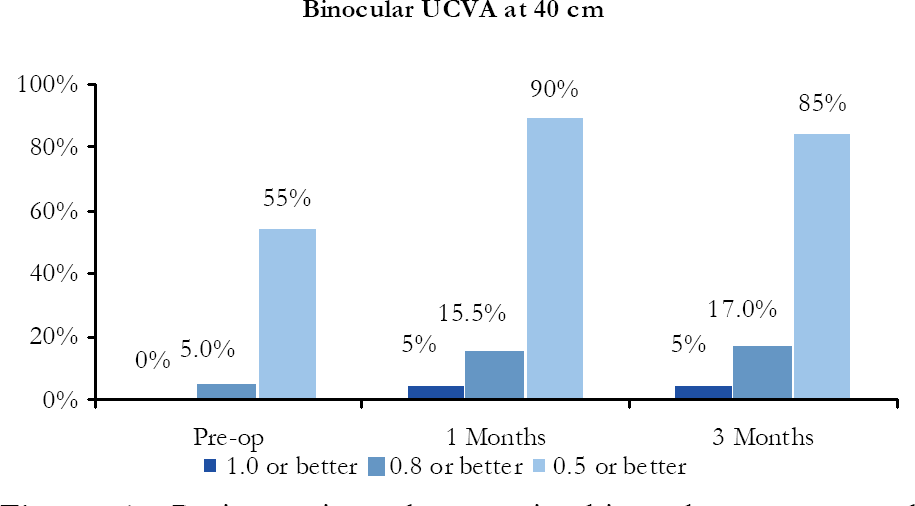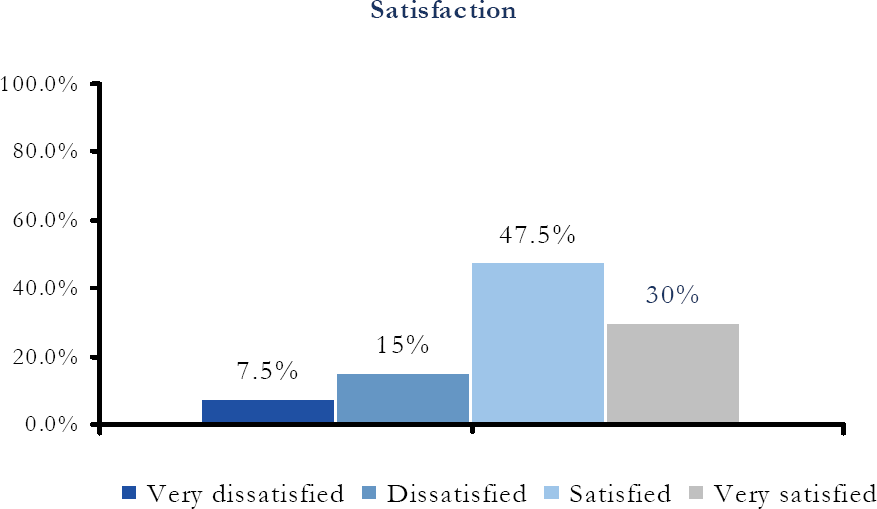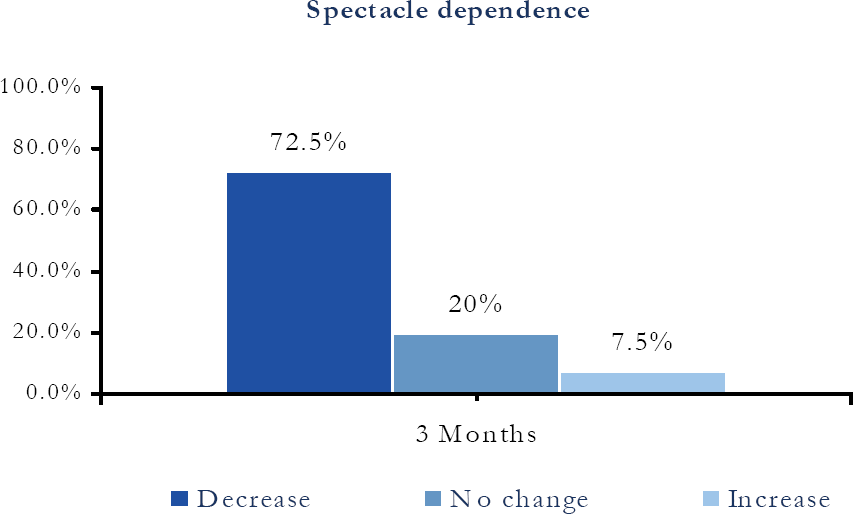Abstract
Purpose
To evaluate the clinical results of monovision treatment applied to cataract patients who planned to undergo phacoemulsification and posterior chamber intraocular lens (PC IOL) implantation.
Methods
Phacoemulsificaiton and implantation of a monofocal PC IOL were performed in 40 patients between January 2005 and January 2006. Surgeries were performed on the dominant eye with the postoperative goals of emmetropia and on the nondominant eye with the postoperative goals of mild myopia. Patients' satisfaction, refractive change, and visual acuity were evaluated for at least 3 months after the surgery.
Results
The mean postoperative uncorrected near visual acuity (UCNVA) of binocular eyes was 0.56±0.52, which was a statistically significant improvement compared with the mean preoperative UCNVA ( P<0.001). The mean postoperative uncorrected far visual acuity(UCFVA) of binocular eyes was 0.70±0.34, which was a statistically significant improvement compared with the mean preoperative UCFVA ( P<0.001). In all, 77.5% (31 of 40) of patients were satisfied with the results.
Go to : 
References
1. Stahl JE. Conductive keratoplasty for presbyopia: 3-year results. J Cataract Refract Surg. 2007; 23:905–10.

2. Beddow DR, Martin SJ, Pfeiffer CH. Presbyopic patients and single vision contact lenses. South J Optom. 1966; 8:9–11.
3. Nano HD, Muzzin S. Noncontact holmium: Yag laser themal keartoplasty for hyperopia. J Cataract Refract Surg. 1998; 24:751–7.
4. Wright KW, Guemes A, Kapadia MS, Wilson SE. Binocular function and patient satisfaction after monovision induced by myopic photorefractive keratectomy. J Cataract Refract Surg. 1999; 25:177–82.
6. Harris MG, Classe JG. Clinicolegal considerations of monovision. J Am Optom Assoc. 1988; 59:491–5.
7. Ahn K, Huh DW, Kim WJ, Chung ES. Clinical evaluation of monovision induced by laser thermal keratoplasty (LTK). J Korean Ophthalmol Soc. 2003; 44:1036–43.
8. Garner LF, Yap MK. Changes in ocular dimensions and refraction with accommodation. Ophthalmic Physiol Opt. 1997; 17:12–7.

9. Nakazawa M, Ohtsuki K. Apparent accommodation in pseudophakic eyes after implantation of posterior chamber intraocular lenses. Am J Ophthalmol. 1983; 96:435–8.

10. Trindade F, Oliveira A, Frasson M. Benefit of against-the-rule astigmatism to uncorrected near acuity. J Cataract Refract Surg. 1997; 23:82–5.

11. Giuseppe R, Fabio B, Giorgio R. Contrast sensitivity in multifocal intraocular lenses. J Cataract Refract Surg. 1993; 19:22–5.
12. Anne WN, Lief C, Thomas O. Contrast sensitivity and glare in patients with a diffractive multifocal intraocular lenses. J Cataract Refract Surg. 1993; 19:254–7.
13. Pieh S, Weghaupt H, Storpik C. Contrast sensitivity and glare disability with diffractive and refractive multifocal intraocular lenses. J Cataract Refract Surg. 1998; 24:659–62.

14. Dick HB, Krummenauer F, Schwenn O. . Objective and subjective evaluation of photic phenomena after monofocal and multifocal intraocular lens implantation. Ophthalmology. 1999; 106:1878–86.
16. Josephson JE, Erickson P, Back A. . Monovision. J Am Optom Assoc. 1990; 61:820–6.
17. Harris MG, Classe JG. Clinicolegal considerations of monovision. J Am Optom Assoc. 1988; 59:491–5.
Go to : 
Table 1.
Patients’ demographics
| Demographic | Value |
|---|---|
| Number of patients (eyes) | 40 (80) |
| Gender (n, %)∗ Female | 21 (52.5%) |
| Male | 19 (47.5%) |
| Age (year) Mean±SD | 67.1±5.03 |
| Range | 60 to 80 |
| Preop SE (D) † Mean±SD | +0.55±0.68 |
| Range | -0.50 to +2.00 |
Table 2.
Perioperative comparison of spherical equivalent (SE), uncorrected near visual acuity (UCNVA), and uncorrected far visual acuity (UCFVA)




 PDF
PDF ePub
ePub Citation
Citation Print
Print






 XML Download
XML Download